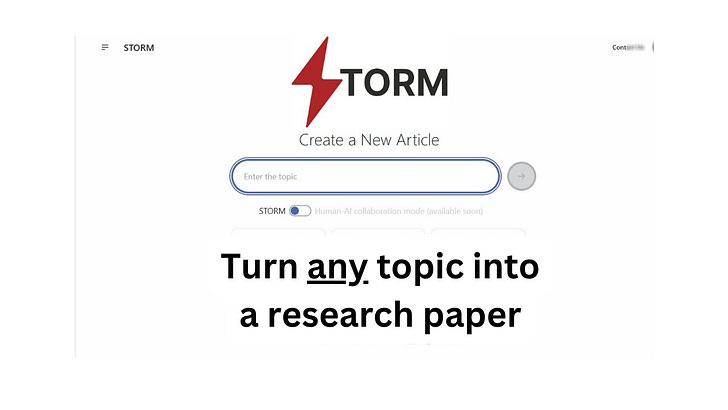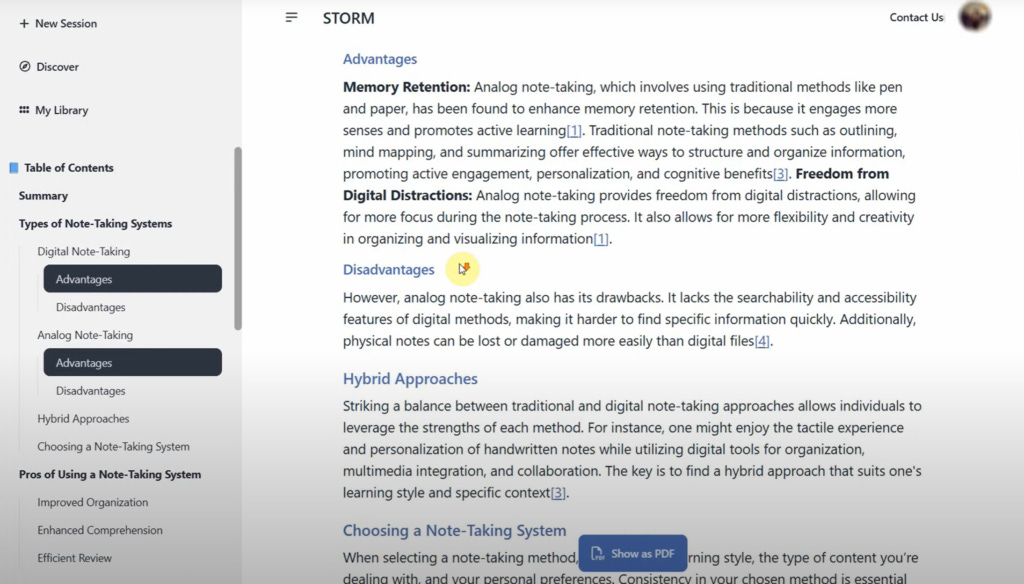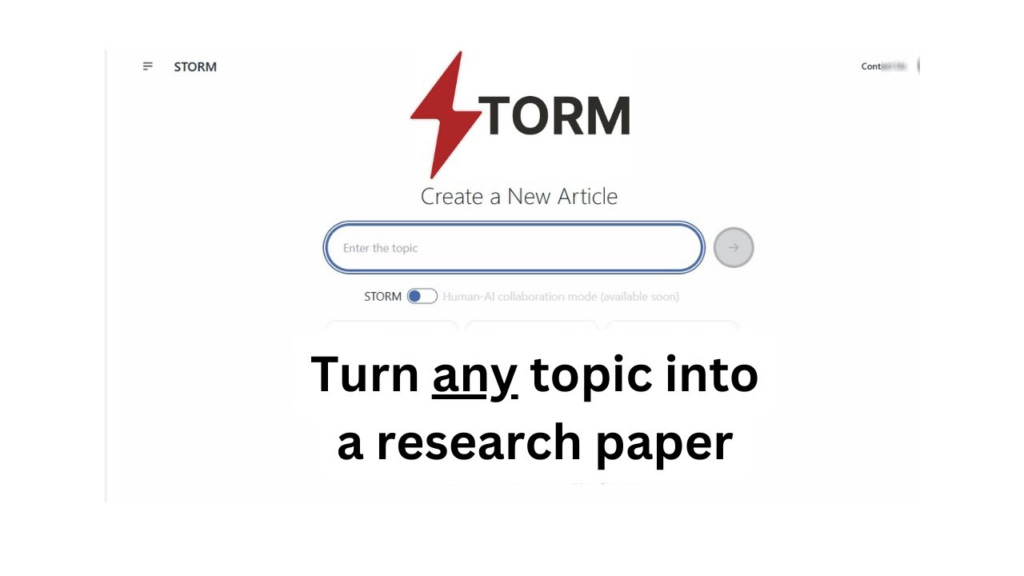STORM: Generate a Wikipedia-like Report on Any Topic
In a recent video on my YouTube channel, I compared ChatGPT, Perplexity AI and Claude AI. There are some differences between each tool depending on what you are looking for, but all work fantastically well.
I have recently come across a new tools called Strom by Stanford which I reviewed here:
STORM, by Stanford University is an AI-powered tool, and stands for Synthesis of Topic Outlines through Retrieval and Multi-perspective Question Asking, quite a mouthful, but its capabilities are impressive. Storm is designed to generate full-length articles akin to those found on Wikipedia, making it a noteworthy competitor to popular AI tools like ChatGPT and Perplexity.
What is Storm?
Storm is an AI tool that creates comprehensive articles by researching topics and structuring the information it retrieves from the internet. It’s an advanced LLM (Large Language Model) system that writes articles from scratch based on user prompts. You can access Storm for free, simply by logging in through Google, GitHub, or email.
Getting Started with Storm
To start using Storm, you can visit https://storm.genie.stanford.edu/ and log in. Once logged in, you can create a new article by providing a prompt. For instance, I asked it to generate an article on the pros and cons of using a note-taking system for meeting notes.
The tool takes a few minutes to generate the content, during which it browses the internet and organizes the information it gathers.
Storm operates in multiple stages:
Pre-writing: The tool researches the topic extensively by browsing various sources online.
Writing: It organizes the information into a coherent structure and begins drafting the article.
Post-writing: The generated article is then refined, although it’s noted that the output is not publication-ready without some user intervention.
Features and Performance
Storm’s ability to generate detailed articles is impressive. For example, when tasked with discussing the pros and cons of note-taking systems, it created a structured article with sections on digital and analog note-taking, including their respective advantages and disadvantages. The results were quite comprehensive, though the text required some editing for readability and publication quality.
The tool references various sources and even provides a table of contents for the generated articles, making it easy to navigate through the content. The generated articles can be downloaded as PDFs, which is a useful feature for further editing and refinement.
Exploring Other Articles
Storm also allows users to discover articles generated by other users. You can browse the most popular and recent articles, which cover a wide range of topics from the evolution of AI to the rise of electric vehicles. This feature is particularly useful for getting inspiration or understanding the capabilities of the tool.
I also tested Storm’s capability by asking it to write about the history of the UAE. The generated article was well-organized, covering various historical periods and providing detailed information sourced from reputable sites like Wikipedia and official government portals. While the text was accurate and informative, incorporating images would enhance the articles further.
Conclusion
Storm by Stanford University is a powerful AI tool for generating detailed articles on any given topic. It stands out with its ability to research extensively and provide structured, informative content. Although the articles require some editing for final publication, Storm offers a strong foundation, saving users significant time in the content creation process. Currently free to use, it’s an excellent tool for anyone looking to leverage AI for generating comprehensive written content.
Check out Storm and see how it can transform your content creation process. Whether you’re a student, a professional, or simply curious about AI, Storm offers a glimpse into the future of automated knowledge curation.






